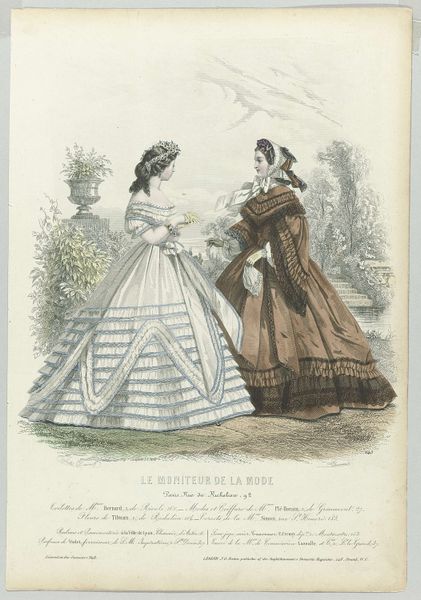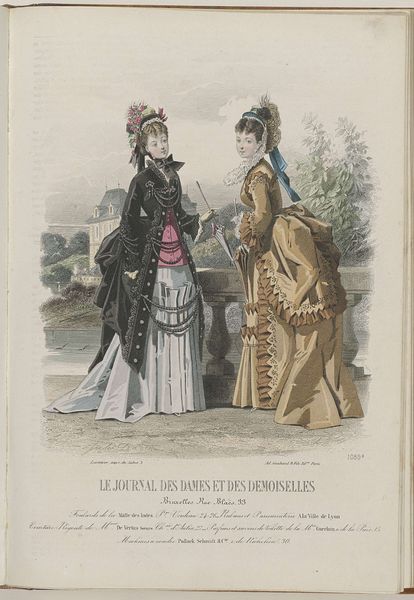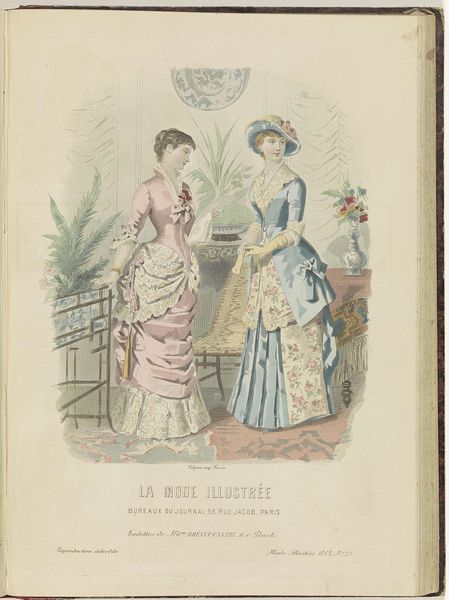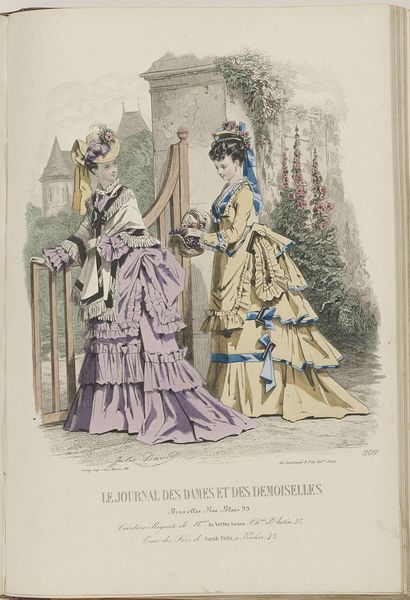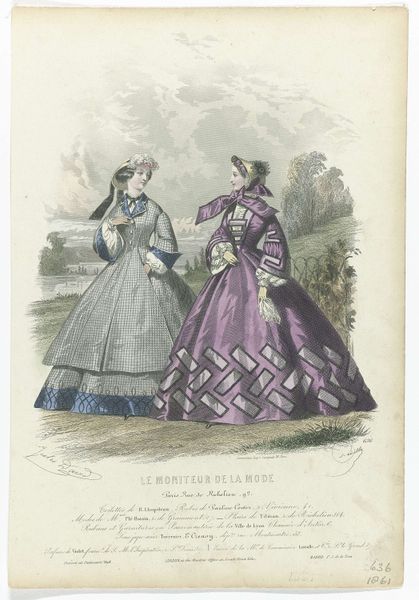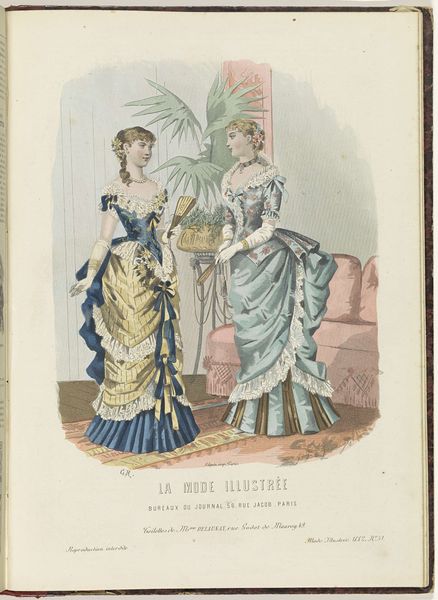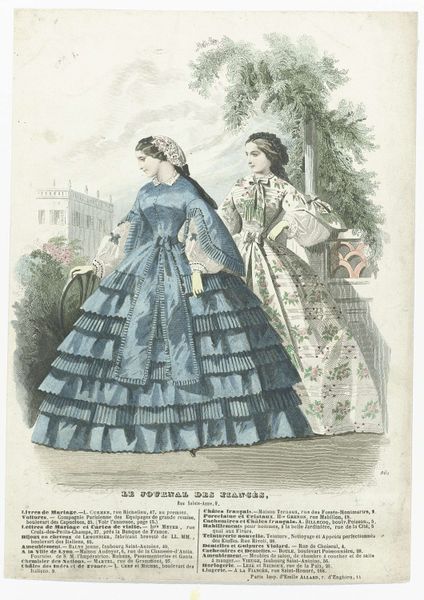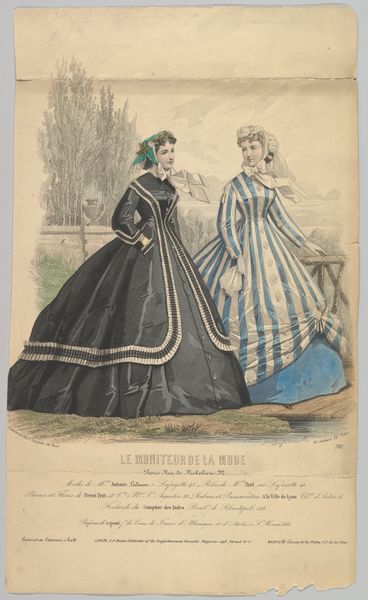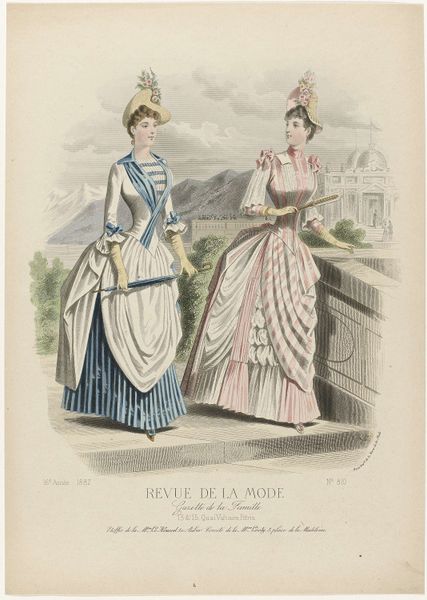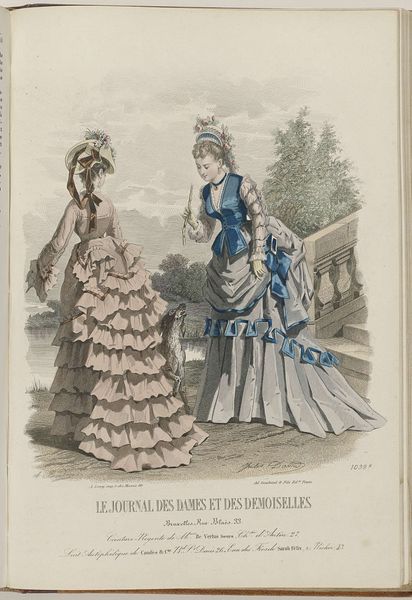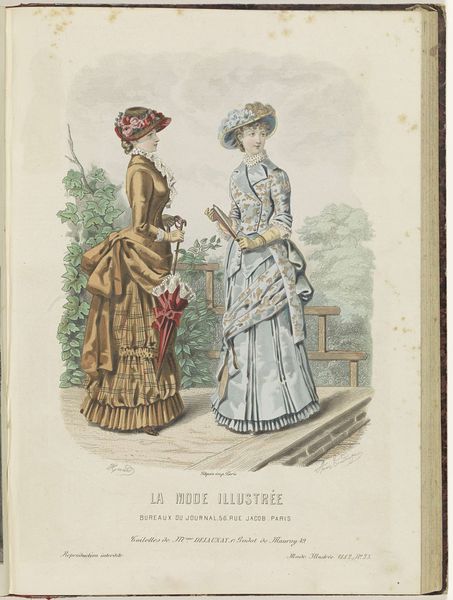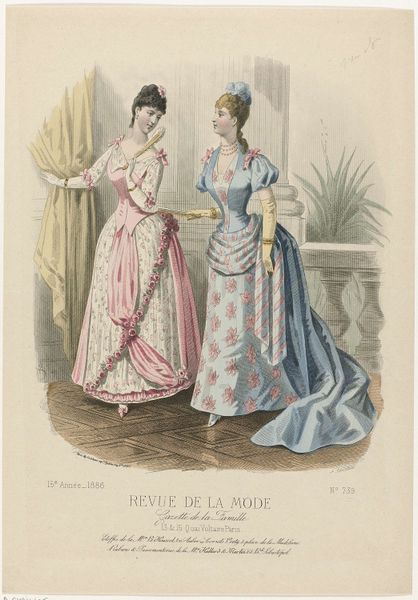
Dimensions: height 295 mm, width 200 mm
Copyright: Rijks Museum: Open Domain
Curator: What a find! This is "Journal des Dames et des Demoiselles, 15 Novembre 1872, No. 1102B," dating back to 1872. It's rendered with watercolor and printmaking techniques, predominantly on paper. Editor: The color palette is what hits me first. Those soft blues and browns evoke a tranquil, almost wistful, mood. It is a little conventional. Curator: It appeared in a popular fashion journal, targeting bourgeois women. These weren't mere drawings, but tools of aspirational consumption and markers of class. Consider the layers: the print foundation, then watercolor additions. Mass production meets individual artisan touch. Editor: Yes, but even in this seemingly straightforward image of two fashionable women, we're seeing very constructed performances of femininity. Who were these journals serving and how did their very existence affect the labor that so much of it must have depended upon? Were these women arbiters, or victims, or a little of both? Curator: Precisely. It reflects a burgeoning industry designed to shape and then serve very carefully gendered desires and roles. Someone had to produce the clothing depicted, and so it points toward exploitative garment workshops that existed at this time. Editor: We also can consider Romanticism as a style. These gowns are beautiful but also very restricting, so it also makes me question ideas of liberty versus captivity of 19th century women, especially from their clothing. Curator: Indeed. Think about the societal pressures reflected in these images—the pressure to be fashionable, to maintain a certain appearance. Even the very materiality of the print—the paper, the ink, the printing process—speak to the evolving modes of production of such publications, too. Editor: It prompts such compelling thought about social identity, art, gender and class. A glimpse into the coded, aesthetic language of the 19th century through which certain women were allowed to communicate in order to signal to other women of class. Curator: An excellent note to end on; it is really is fascinating when you think about how it reflects production and consumption for a growing middle and upper class in the 19th century. Editor: Absolutely, and I am glad to consider that production involves people like seamstresses, illustrators and readers. All these layers and implications enrich our understanding so much more.
Comments
No comments
Be the first to comment and join the conversation on the ultimate creative platform.
